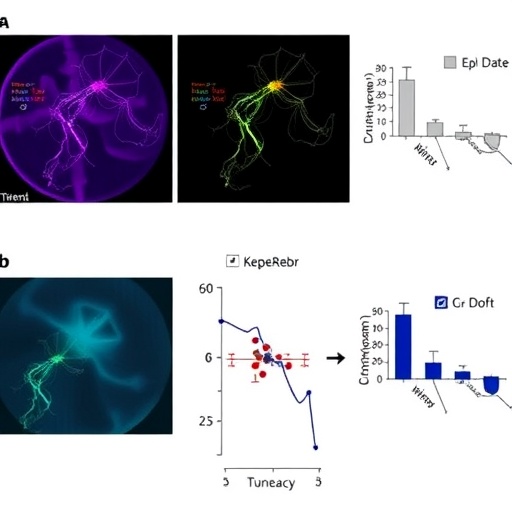
In an increasingly demanding healthcare environment, nursing students are at the forefront of juggling rigorous academic requirements with hands-on clinical training. Amidst these challenges, a growing body of evidence indicates that low back pain (LBP) is a prevalent issue among this population. A recent study by Daher, Sawaed, and Azzam, published in BMC Nursing, sheds light on the intricate relationship between hospital-based clinical training and the incidence of LBP among nursing students. This research provides crucial insights that can influence nursing education and patient care practices.
The prevalence of low back pain among nursing students is a concern that has warranted attention from both academic and healthcare institutions. The study reveals that a staggering number of nursing students report experiencing LBP during their clinical rotations. This situation not only affects their physical health but also has implications for their academic performance and future clinical practice. As future nurses, these students must navigate their training with both skill and resilience, which can be severely compromised by persistent pain.
Low back pain is often attributed to a combination of physical and psychological factors. In the context of clinical training, nursing students are frequently subjected to physically demanding tasks such as lifting patients, extended periods of standing, and performing procedures that require awkward body postures. Additionally, the psychological strain associated with the high-stakes environment of hospitals can exacerbate the physical toll, leading to a greater likelihood of developing LBP. The study identifies these layered risk factors and emphasizes the necessity for targeted interventions.
Investigating the risk factors for low back pain among nursing students, the researchers utilized a comprehensive questionnaire that assessed not only physical aspects but also psychosocial variables. The findings indicate that students who engaged in physical exercise experienced lower rates of LBP, suggesting the protective role of fitness and proper body mechanics. Conversely, students who reported high levels of stress and insufficient coping mechanisms were more susceptible to LBP. These insights underscore the importance of holistic approaches in preparing nursing students for the realities of clinical practice.
The implications of LBP for nursing care extend beyond the individual experience of the students. As future frontline healthcare providers, nursing students facing chronic pain may have reduced capacity to deliver high-quality patient care. Consequently, the presence of LBP can lead to increased absenteeism in clinical settings, further exacerbating the strain on healthcare systems already grappling with staffing shortages. This ripple effect of low back pain highlights the need for institutional support and proactive measures in nursing education programs.
Effective strategies to mitigate the risk of low back pain among nursing students include educational programs focused on body mechanics and ergonomics. Institutions could develop workshops that teach students proper lifting techniques and posture maintenance during their clinical tasks. Moreover, integrating physical fitness programs into nursing curricula could encourage students to prioritize their health and well-being. By fostering a culture of awareness and prevention, educational institutions can empower nursing students to take ownership of their health.
Another potential solution involves mental health support for nursing students. Given the psychological burden associated with clinical training, universities should prioritize mental health resources to help students manage stress. This might involve counseling services, stress management workshops, or peer support groups, creating an environment where students feel supported and less isolated in their challenges. Addressing mental well-being could have a significant impact on reducing the occurrence of physical ailments like low back pain.
The researchers also call for further longitudinal studies to monitor the long-term effects of clinical training on nursing students’ musculoskeletal health. Understanding how LBP evolves through academic and professional careers will provide invaluable data for shaping curricula that not only prioritize academic achievement but also consider health maintenance as a critical component of nursing education. Such research could lay the groundwork for developing standardized health protocols that prepare nursing students for the physical demands of their future roles.
Interdisciplinary collaboration between educational institutions and healthcare facilities is vital for tackling the issue of low back pain among nursing students. By establishing partnerships, schools can ensure that the training environments reflect best practices in ergonomics and safe handling procedures. This concerted effort can help create a supportive network for students, equipping them with the tools necessary to thrive both academically and professionally.
The study by Daher and colleagues is pivotal as it brings to the forefront a topic that has been relatively understudied in nursing education. By focusing on the intersection of clinical training and physical health, it highlights the importance of integrating physical wellness into nursing curriculums. Such integration is not merely beneficial for students; it enhances the overall quality of patient care by preparing students to function effectively without the burden of chronic pain.
As we contemplate the future of nursing education, the implications of this research extend far beyond the classroom. By addressing the prevalence of low back pain and its underlying risk factors, educational institutions can enact meaningful change that not only benefits students but also elevates the standards of nursing care. As these insights are disseminated through academic and professional channels, the conversation surrounding the well-being of nursing students will hopefully gain the attention it deserves, leading to transformative shifts in how nursing training is structured.
In conclusion, Daher, Sawaed, and Azzam’s study serves as a clarion call for nursing education reformers. It emphasizes the necessity of recognizing the physical and psychological demands placed on nursing students and the compelling need for preventive strategies against low back pain. By taking proactive steps to prioritize student well-being, nursing programs can ensure that their graduates not only possess the clinical knowledge and skills vital for success but are also equipped to maintain their health and deliver exceptional patient care.
Subject of Research: Low Back Pain in Nursing Students during Clinical Training
Article Title: Hospital-based clinical training and low back pain in nursing students: prevalence, risk factors, and implications for nursing care.
Article References:
Daher, A., Sawaed, T., Azzam, J. et al. Hospital-based clinical training and low back pain in nursing students: prevalence, risk factors, and implications for nursing care. BMC Nurs 24, 1115 (2025). https://doi.org/10.1186/s12912-025-03450-w
Image Credits: AI Generated
DOI: 10.1186/s12912-025-03450-w
Keywords: Low back pain, nursing students, clinical training, risk factors, ergonomic interventions.
Tags: clinical rotations and pain managementhealthcare institutions and student well-beingimpact of LBP on academic performanceimplications of LBP for future nurseslow back pain in nursing studentsnursing education and clinical trainingnursing student health challengesphysical demands of nursing studentsprevalence of low back pain in healthcarepsychological factors in low back painresilience in nursing educationstrategies for preventing low back pain





